Food Insecurity – Fact vs Fiction
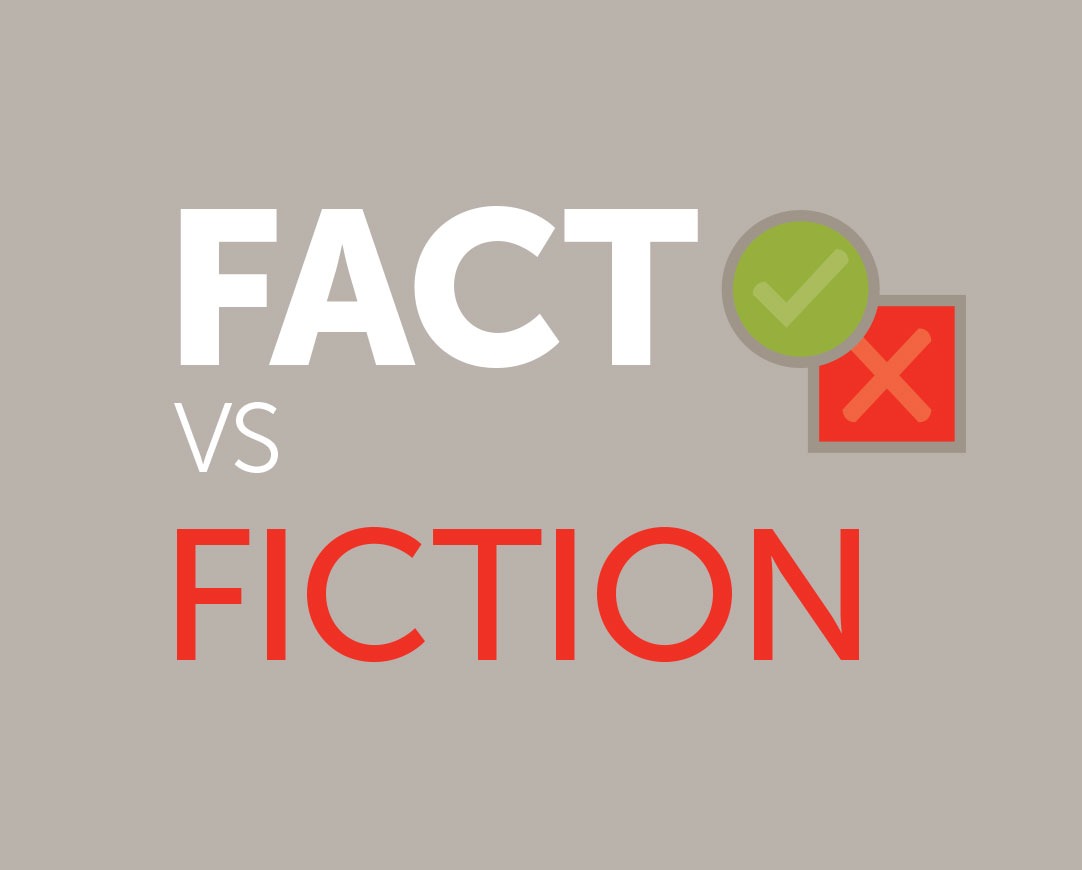
The real truths about food insecurity — what it is, who experiences it, and what we can do about it.
This is the third in a series of planned posts exploring the effects of decreased funding and elimination of programs on the food assistance network. Read the first and second installments, “We’re Here to Help” and “New Threats to the Food Safety Network.”
There is a lot of information out there about hunger and food insecurity, but in this age of fake news, it can be difficult to separate food insecurity facts from old-fashioned stereotypes and misinformation.
The Maryland Food Bank is here to help you better understand what food insecurity means, who is food insecure, and the real facts about food assistance programs available to Marylanders in need.
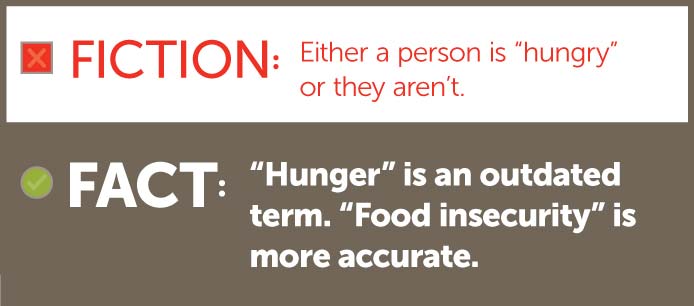
Fiction
Either a person is “hungry” or they aren’t.
Fact
“Hunger” is an outdated term. “Food insecurity” is more accurate, describing a spectrum of people who do not have consistent access to food on any given day, due to a lack of money or other resources.
Maryland is one of the wealthiest states in the country, so how bad can things be?
Well, picture eight people you encounter each day — your child’s schoolteacher, the cashier at your local supermarket, the person in the car next to you during your morning commute, your co-workers — odds are one of them will experience food insecurity at some point.
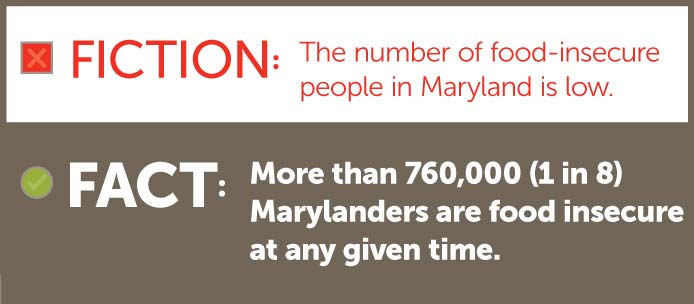
Fiction
The number of food-insecure people in Maryland is low.
Fact
More than 760,000 (1 in 8) Marylanders are food insecure at any given time.
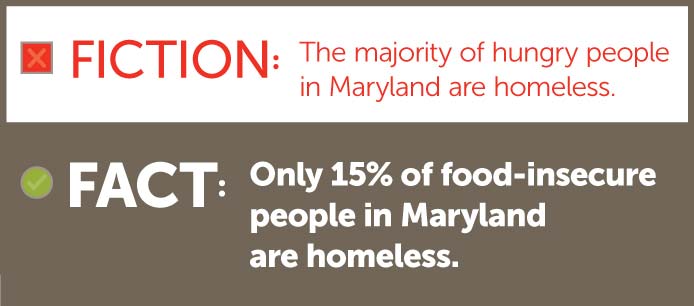
Fiction
The majority of hungry people in Maryland are homeless.
Fact
Only 15% of food-insecure people in Maryland are homeless. Most of those who receive food from the MFB network are children, seniors, and working individuals who just can’t make ends meet. In fact, nearly 39% of food-insecure Marylanders make too much to qualify for government assistance.
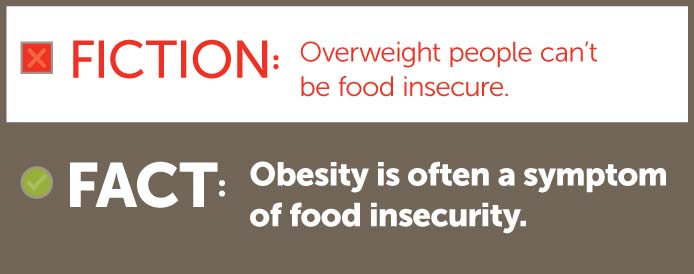
Fiction
Overweight people can’t be food insecure.
Fact
Obesity can actually be a symptom of food insecurity. People living in poverty are often only able to afford low-cost, unhealthy, processed food with little nutritional value. A growing number of studies show a direct correlation between food insecurity and obesity for some.
Food banks and other organizations administer government and community programs to assist the more than 760,000 Marylanders that face food insecurity in different ways.
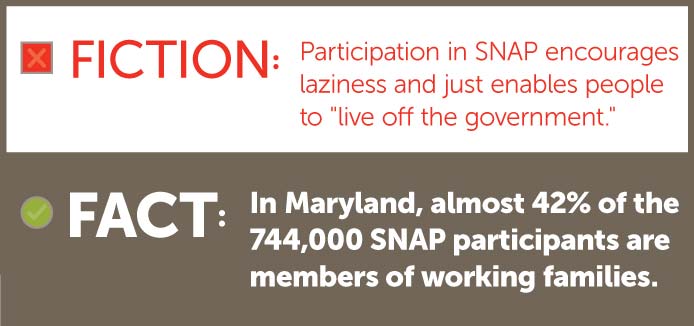
Fiction
Participation in SNAP encourages laziness and just enables people to “live off the government.”
Fact
In Maryland, almost 42% of the 744,000 SNAP participants are members of working families.
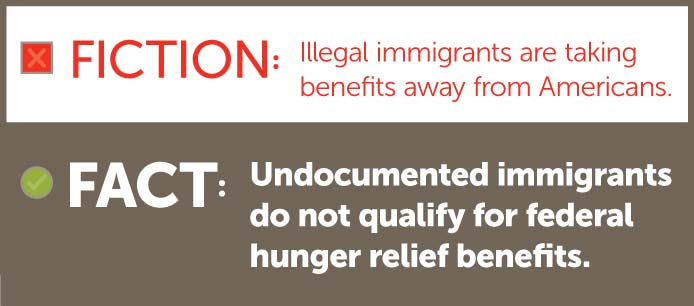
Fiction
Illegal immigrants are taking benefits away from Americans.
Fact
Undocumented immigrants do not qualify for federal hunger relief benefits. However, their children, if they are American citizens, are eligible.
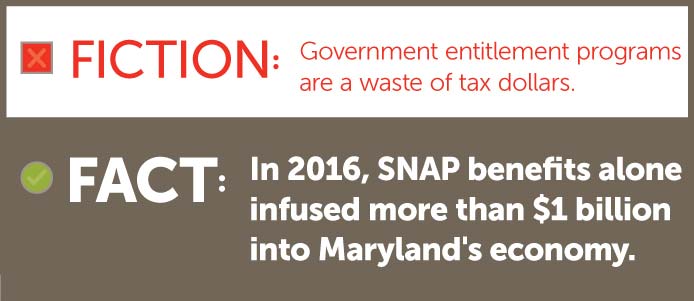
Fiction
Government entitlement programs are a waste of tax dollars.
Fact
In 2016, SNAP benefits alone infused more than $1 billion into Maryland’s economy.
We invite you to learn more about some of these critical programs, on our Food Assistance 101 page, which offers definitions of key terms and compares and contrasts programs including WIC, SNAP, Supper Clubs, My Groceries to Go! and more.
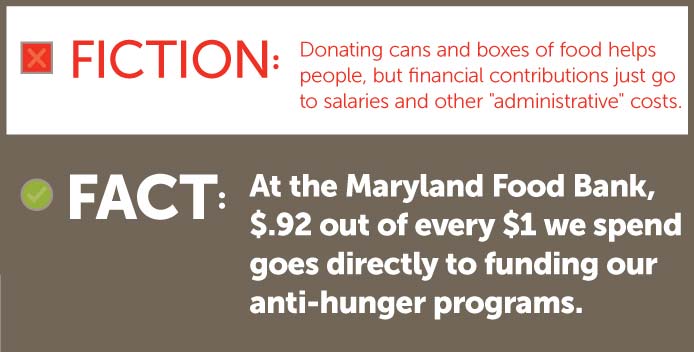
Fiction
Donating cans and boxes of food helps people, but financial contributions just go to salaries and other “administrative” costs.
Fact
At the Maryland Food Bank, $.92 out of every $1 we spend goes directly to funding our anti-hunger programs.
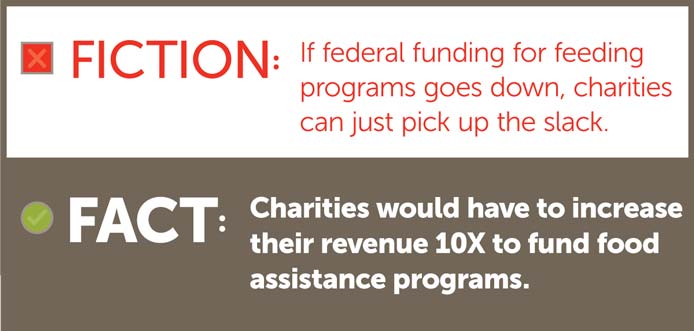
Fiction
If federal funding for feeding programs goes down, charities can just pick up the slack.
Fact
Federal funding for food subsidy programs in 2015 was $107 billion — nearly ten times the combined revenue of all the public charities that provided food to hungry people in 2015 ($11.47 billion.) That’s a pretty big gap to close.
Now that you have a better understanding of food insecurity facts — what it really means to be food insecure, who in your community might be experiencing food insecurity and the real facts behind government relief programs — we hope you’ll join us in the fight to end hunger in Maryland.
You can host a virtual food drive, donate funds or let your elected officials know where you stand.
*Center on Budget and Policy Priorities
**National Center for Charitable Statistics
Get updates on our progress in the fight against hunger
Want to see how your involvement directly impacts the well-being of your neighbors in need? Get the latest news sent to your inbox.







I noticed that all of the Food Bank’s listed are for Baltimore City.
What do you have for Baltimore County?
Ms. Hamdan –
My apologies that you are not able to find what you need quickly.
As our “Need Food?” search tool used zip codes, you’ll need to type in a Baltimore County Zip Code such as 21093 (Lutherville-Timonium).
Entering 21093 into that tool finds 125 locations within 25 miles of that area: https://goo.gl/iJneA6.
I hope this helps, but please do not hesitate to reach out again if you ned further assistance.
Ben
Can you tell me close to me 20784
Patty –
Your zip code is actually serviced by our sister organization, The Capital Area Food Bank.
They have a number of locations within 20 miles of where you live: https://goo.gl/E8g3M0
I sincerely hope you are able to get the assistance you need.
Ben
Indeed help with food don’t know we’re to go live in 21122
Stephanie –
Thank you for having the courage to ask.
This link will give you all locations within 25 miles of 21122: https://goo.gl/Gvd7Z5
You can always click on the “Need Food?” button on the upper-right area of our homepage, at http://www.mfoodbank.org
Ben
I volunteered at the Maryland Food Bank!!! An awesome organization, well organized
Dee –
Your message is very timely, as this is Volunteer Appreciation Week!
Without the dedication of folks like you, we couldn’t possibly get as much food as we do to our neighbors in need – thank you so, so much.
When you’re ready to volunteer again, just follow this link: https://mdfoodbank.org/volunteer/
Can you please send me a list as for who is giving out food in the area of 21213.
Ms. Harvey –
Thanks kindly for reaching out to us.
This link will give you all locations within 25 miles of 21213: https://goo.gl/bt9wmg
You can always click on the “Need Food?” button on the upper-right area of our homepage, at http://www.mfoodbank.org
Please do let us know if you are able to get the assistance you need.
Ben